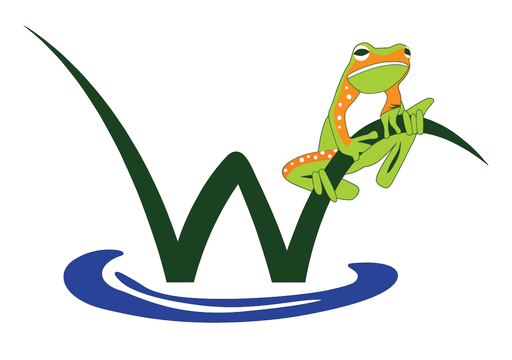Our stunning wetlands are a remarkable feature of the Australian landscape. From rivers that crisscross our cities and drain into surrounding seas, to the vast floodplains of central Australia that only see water every few years, these breathtaking natural and artificial wetlands capture our imagination.
The amazing diversity of lakes, mudflats and billabongs, marshes, swamps and fens and coral reefs, mangroves and peatlands – our wetlands come in all shapes and sizes. Even amidst our urban sprawl, we have manmade lakes, ponds and canals, together with some serene natural wetlands that serve as centres of recreation for us and refuge for our wildlife.
We often pass by them wondering at their natural beauty and abundance. The diverse wildlife and plant-life they support. Their scenic beauty. The interlinkages and connections. And the cycles and seasons that bring out their unique character. Yet their many other (important) functions go largely unnoticed by us.
It is hard to imagine Australia without its beautiful wetlands. They are special places serving as storehouses of life-giving water. And, they play a key role beyond sustenance, water conservation and climate control.
1. Wetlands are “Nature’s Kidneys”
Wetlands have been likened to nature’s kidneys owing to their deep cleansing effect on our waterways. They are essential for sustaining healthy waterways on which communities throughout Australia depend.
Much like the kidneys that filter and extract waste and balance the hormones in the human body, the wetlands trap and filter the nutrients, sediments and pollutants, cleaning the water and recharging the underground aquifers. By absorbing pollutants, wetlands improve the quality of water and the surrounding bushland.
2. Wetlands and the Impact on Climate Change
Wetlands have the unique ability to capture and store carbon dioxide from the atmosphere, thus slowing the impacts of climate change. Coastal wetlands are known to store large quantities of ‘blue carbon’ (the carbon in coastal ecosystems is known as blue carbon).
The flourishing vegetation is responsible for consuming carbon dioxide. Some of the used-up carbon dioxide is released back into the atmosphere, but most of it remains trapped around the roots, sediments and in the marshy ground.
Statistics show us that although the wetlands cover only 5 – 8% of the Earth’s land surface, they hold anywhere up to 30% of the total store of carbon on the planet.
3. Wetlands Act as Storm Buffers
Wetlands perform a crucial function as storm buffers – including inland flood control and coastal storm buffers. The thriving foliage – seagrasses, reefs, rushes, reeds, bushes and more – all protect against the destructive action of flood-water and dampen their impact.
Wetlands protect coastal communities from extreme events, such as typhoons, cyclones and hurricanes. They protect our shores from corrosive wave action.
4. Wetlands Serve as Habitats for Biodiversity
Wetlands are vital habitats for native species such as the oblong turtles and black swans, as well as a horde of international migratory birds such as greenshanks, red-necked stints and sharp-tailed sandpipers. They provide much-needed refuge for a number of migratory shorebird and seabird species, serving as important feeding and resting habitats during spring and summer months. Some endangered species such as Carnaby’s cockatoo and the peregrine falcon rely on the wetlands for their food and water.
Wetlands support a unique ecosystem. And some of the plant and animal varieties are curiously distinct, having evolved specifically to survive the changing water and salinity conditions.
5. Artificial Wetlands and Recreation
Constructed wetlands or manmade wetlands, that are designed to mimic our natural wetlands are often found in urban areas. They can serve the same function as our natural wetlands – of supporting wildlife and creating booming ecosystems and habitats, although they often lack the amazing biodiversity of natural wetlands.
Artificial wetlands are popular destinations for recreation and ecotourism, they also provide us with an opportunity of ‘experiencing nature’ right in the heart of our own cities and suburbs.
6. Water Conservation and Sustenance
The wetlands ecosystem teaches us a great deal about water and water conservation. The underground aquifers, which are vast, natural, water-storage reservoirs in the wetlands ecosystem, help replenish the groundwater. While the wetlands themselves act as filters, cleaning and restoring our waterways. The wetlands are often the surface expressions of these aquifers.
All Australians rely on water to sustain life. And water plays a large part in our lives. Whether it’s water for our households, schools, industries or communities, wetlands play an indispensable role and their conservation should be a top priority.
7. Wetlands Need Our Support
Threats to wetlands continue as many of them are being filled, drained and replaced with agricultural fields, roadways and urban developments. Rural and urban encroachment is perhaps the biggest threat. Leaving our animal and bird populations homeless, our waterways exposed and compromised, and our environment permanently degraded.
The wetlands need our support today. From generating public awareness to community involvement in their protection and rehabilitation.
We encourage you to visit us – The Wetlands Centre at Bibra Lake – or your nearest wetlands, to learn about our community outreach and how local communities can participate in and benefit from the wetlands.


0 comments on “7 Things You Should Know About Our Wetlands”